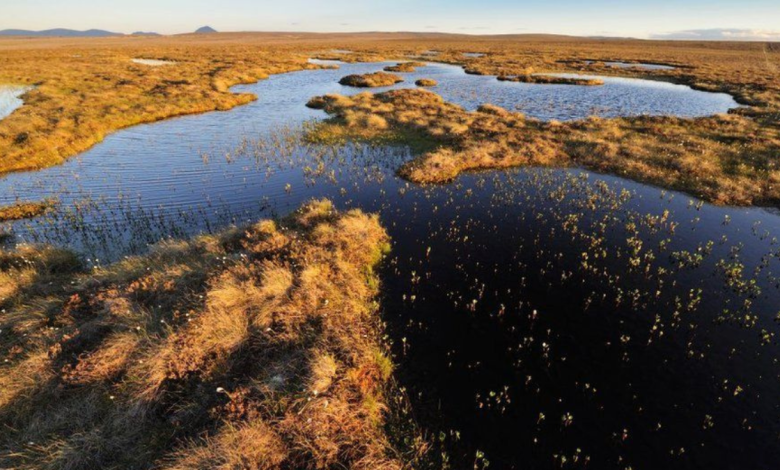Flow Country: Scotland’s Carbon Storehouse on World Stage

In the northern reaches of Scotland lies a seemingly vast expanse of moorland, known as the Flow Country, hiding a remarkable secret beneath its surface. This remote area stores more than double the carbon of all the UK’s forests combined, making it a crucial carbon sink in the fight against climate change.
Now, a dedicated team is working to secure world heritage status for this unique peatland ecosystem. Assessors from Unesco have visited the 187,000-hectare site, and a verdict is expected in the coming year. If successful, it would become the world’s first peatland with such recognition.
The Flow Country’s Hidden Treasure
To the untrained eye, the Flow Country appears as vast empty moorland, but it holds a vital environmental role. Below the surface, it harbors an incredible store of carbon, thanks to its extensive blanket bog system.
This peatland environment is unique because the peat, which retains water, stretches across both hills and glens. The constant wetness prevents plant decomposition, which, in turn, stops the release of carbon dioxide into the atmosphere. Instead, layers of peat accumulate at a rate of about 1 millimeter per year, locking away carbon for millennia.
The Flow Country has been forming for approximately 9,000 years, with each meter of depth representing about a millennium of accumulation. In some areas, the peat reaches many meters deep. To maintain its carbon-sequestering capacity, it’s crucial to keep the peatland in good condition, preventing it from drying out, which would release stored carbon.
Professor Roxane Anderson describes the Flow Country as “globally important” due to its role in carbon storage. She emphasizes the importance of keeping this substantial carbon stock in the ground to combat climate change effectively. World heritage status, an internationally recognized designation, is being pursued to acknowledge the Flow Country’s scientific significance.
A Bid Decades in the Making
The idea of seeking world heritage status for the Flow Country was first discussed in 1988, but serious efforts began in 2010. A formal bid was submitted by the UK government in February, aiming to highlight the importance of landscapes like this. While designation won’t offer additional protection (as much of the land is already covered by statutory designations), it carries global recognition of the area’s significance.
The Flow Country contains an estimated 400 million tonnes of carbon. Dr. Steven Andrews, leading the bid, believes that achieving world heritage status would bring opportunities for restoration, training, and branding. It could also attract more tourists who would have the chance to appreciate this unique ecosystem, emphasizing that true appreciation requires stopping and spending time in the area.
Also Read: Sustainability Meets Art: Blackburn’s Awards Gala Goes Green
The verdict on the Flow Country’s bid for world heritage status is anticipated with great anticipation, not only for Scotland but as a symbol of the significance of peatlands in the global fight against climate change.



